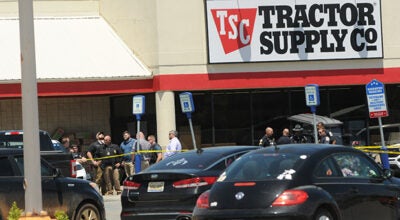Fire deaths rose in 2010
Published 10:22 am Monday, April 4, 2011
The death of an Atmore toddler last year added to the total number of fire deaths reported in Alabama for 2010. The recently released report shows a more than 40 percent increase in fire deaths across the state last year.
Alabama State Fire Marshal Ed Paulk’s office in Montgomery issued the report last week and the number of fire fatalities jumped to 122 in 2010 from 85 the previous year. The figure shows a 43.5 percent increase in fatalities resulting from fires across the state.
“This is neither the highest nor the lowest annual total on record,” Paulk said. “We’d prefer to see zero fire fatalities, though.”
The death of 4-year-old Dylan Barnhill was the result of a fire at the home of the child on 6th Avenue last February. The fire totally consumed the home with other members of the family escaping without injuries.
At the time of the initial investigation, Paulk, who was on the scene following the fire, said it appeared the fire began in the kitchen area of the home.
Although 122 fatalities were reported across the state in 2010, Paulk said the high number is well below half of those on record in 1962.
“In 1962, the old record of 241 was obliterated when 271 fire fatalities were recorded,” Paulk said. “That’s well over twice the total of 122 reported in 1997 and again in 2010. Addressing numbers from this perspective indicates that overall averages are falling, but there’s still room for improvement.”
Paulk said members of the state’s fire service are working hard to spread the message of fire safety to reduce the risk of fires and to save lives.
“Fire safety education goes hand in hand with modern smoke detectors, sprinklers and fire alarms,” Paulk said. “All of that is essential to keeping our citizens as safe as possible.”
Atmore Fire Chief Gerry McGhee echoed that message as he emphasized using caution with heating devices.
“It just takes common sense and planning to keep safe when it comes to fires,” McGhee said. “We strongly urge residents to use caution when using heating devices in the home. When the weather is cool and heating is being used it’s always smart to keep heaters clean and in good working order.”
Although house fires are by far the most dangerous fires, grass fires can also lend to danger of injury or death.
“It’s now getting to the season where we will be getting more calls on grass fires and outdoor fires of that nature,” McGhee said. “For people who have a need to burn yard debris we ask they make sure the area around the fire is clean so fire won’t spread. Also, if you’re going to be doing that kind of burning, it’s always a good idea to give the fire department a call so we can be ready if needed.”
McGhee also said residents should keep fire and/or smoke alarms checked and in good working order.
“Now may be a good time to check the batteries in smoke detectors and fire alarms if it hasn’t been done in a while,” McGhee said. “It’s also a good idea to test those alarms periodically and take the time to replace devices that no longer work.”
According to Paulk’s report, residential smoke detectors and fire alarms became available in about 1969.
“The annual fire fatality figures nationwide began to slowly decline as those devices became less expensive,” Paulk said in his report. “Fire codes began requiring them to be placed in new structures at that time.”
Fire fatalities figures show the record low of 73 fire deaths came in 1998 tying with deaths reported in 2008. In 2009, 85 fire deaths were reported in the state.
“Annual fire fatalities fell to below 200 in 1972 and have only returned twice in 1976 and1977 to figures of 200 or larger,” Paulk said. “We encourage citizens to pay attention to common sense fire safety messages that fire officials from local volunteers to state investigators spread year in and year out.”
Planning and family education can go a long way in helping families to know what to do in case of a fire in the home, Paulk said.
“Have an evacuation plan in place,” Paulk said. “Check smoke detectors regularly and never reenter a burning building. At 2 a.m. with your house on fire is not a good time to come up with an evacuation plan for your family. Be fire safety educated and think.”
The Alabama State Fire Marshal’s Office and the Alabama Association of Volunteer Firefighters are two outstanding sources for additional information on fire safety training and education.
To learn more about the Alabama Fire Marshal’s office or other firefighting organizations, visit the AFM Web site at www.aldoi.gov.





